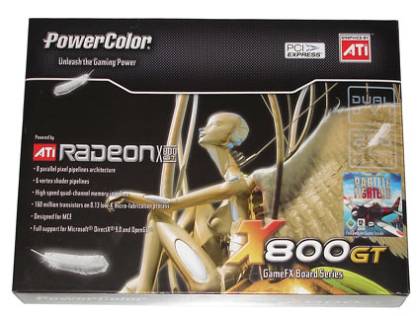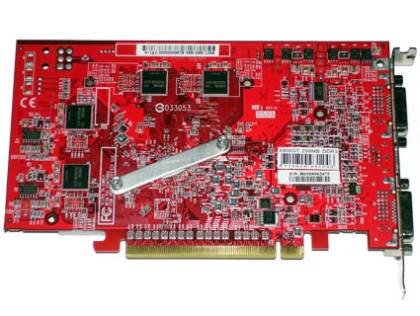Don't Throw Out Your ATI Radeon X800 Yet
The Cards
PowerColor Radeon X800 GT
Officially, the PowerColor Radeon X800 GT is a 256 MB video card with 8 pixel shaders and 6 vertex shader units. As the image below indicates, the card we received had the R480 core. This means we could (and did) attempt to push the clock frequencies to higher levels. In the overclocking section you will see just how far we pushed these cards. The factory tuned core clock speed is 475 MHz, with the memory set at 490 MHz (980 MHz DDR).
The PowerColor Radeon X800 GT has two DVI ports and dual-use S-Video and Composite Out ports as well. The cooler is a solid piece of aluminum that is mounted using only 2 screws, which attach a compression plate on the bottom side of the card to the cooler on the top. The cooler does not touch the any of the 8 Samsung GDDR3 memory modules. The fact that there wasn't any additional cooling for the memory modules restricted our overclocking of the memory frequencies.
The card is modestly priced around $160, which is relatively cheap considering our test sample has a R480 core. (A true Radeon X850 card would run at least around $230 and the XT PE version is around $350.) This is why we think the whole "chip reuse" business is good for the consumer - you can get a nice product at a discounted price.
One word of caution, though: Don't expect every X800 GT card to have the R480 core. Even if yours does, there is generally a reason why the pipes are not being used. Also, we didn't have any quick way of making sure that the review samples had not been "cherry picked".
Open, Sesame: The chip that PowerColor used for its Radeon X800 GT card actually is much more powerful than you might expect.
Get Tom's Hardware's best news and in-depth reviews, straight to your inbox.



